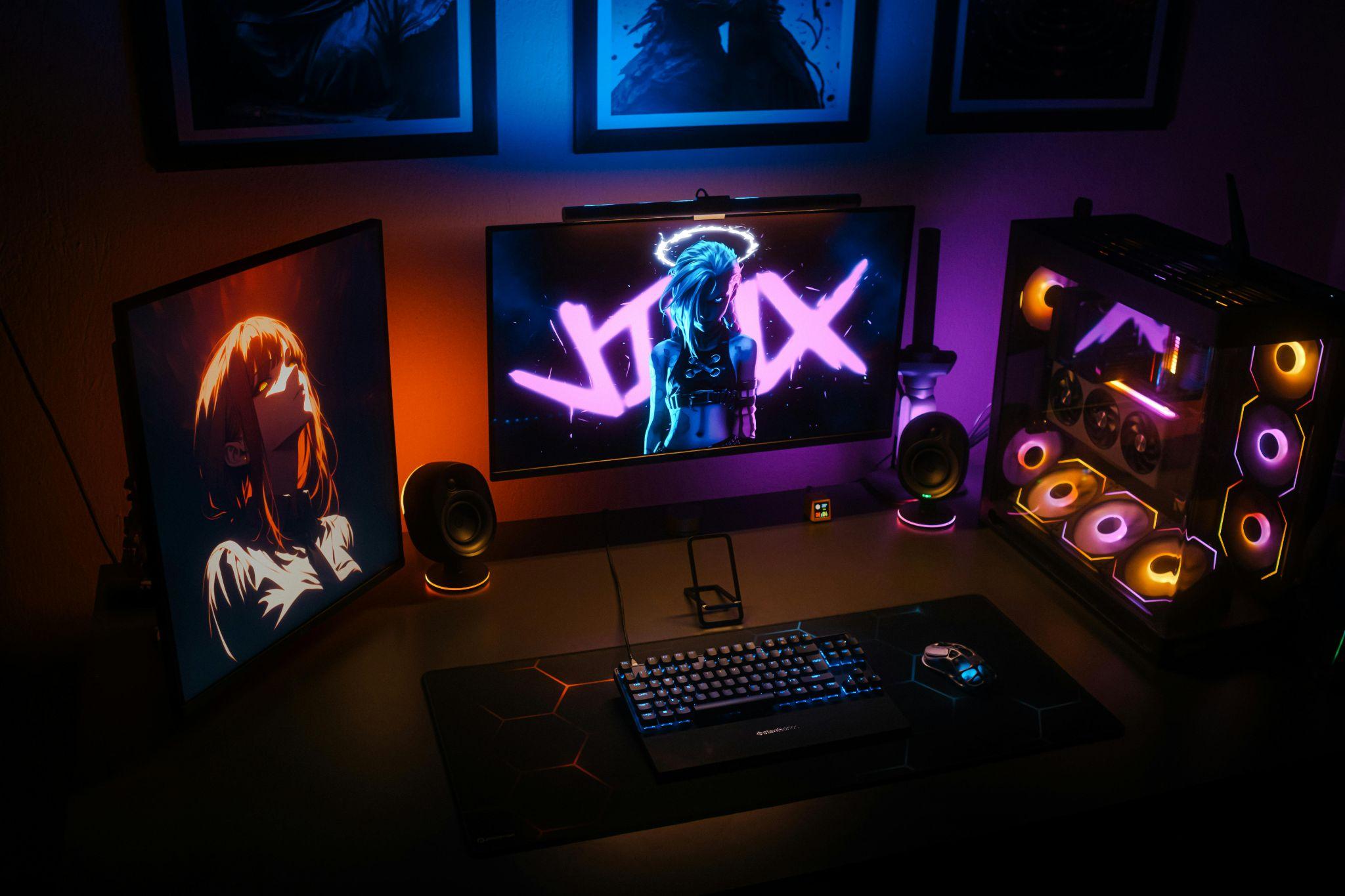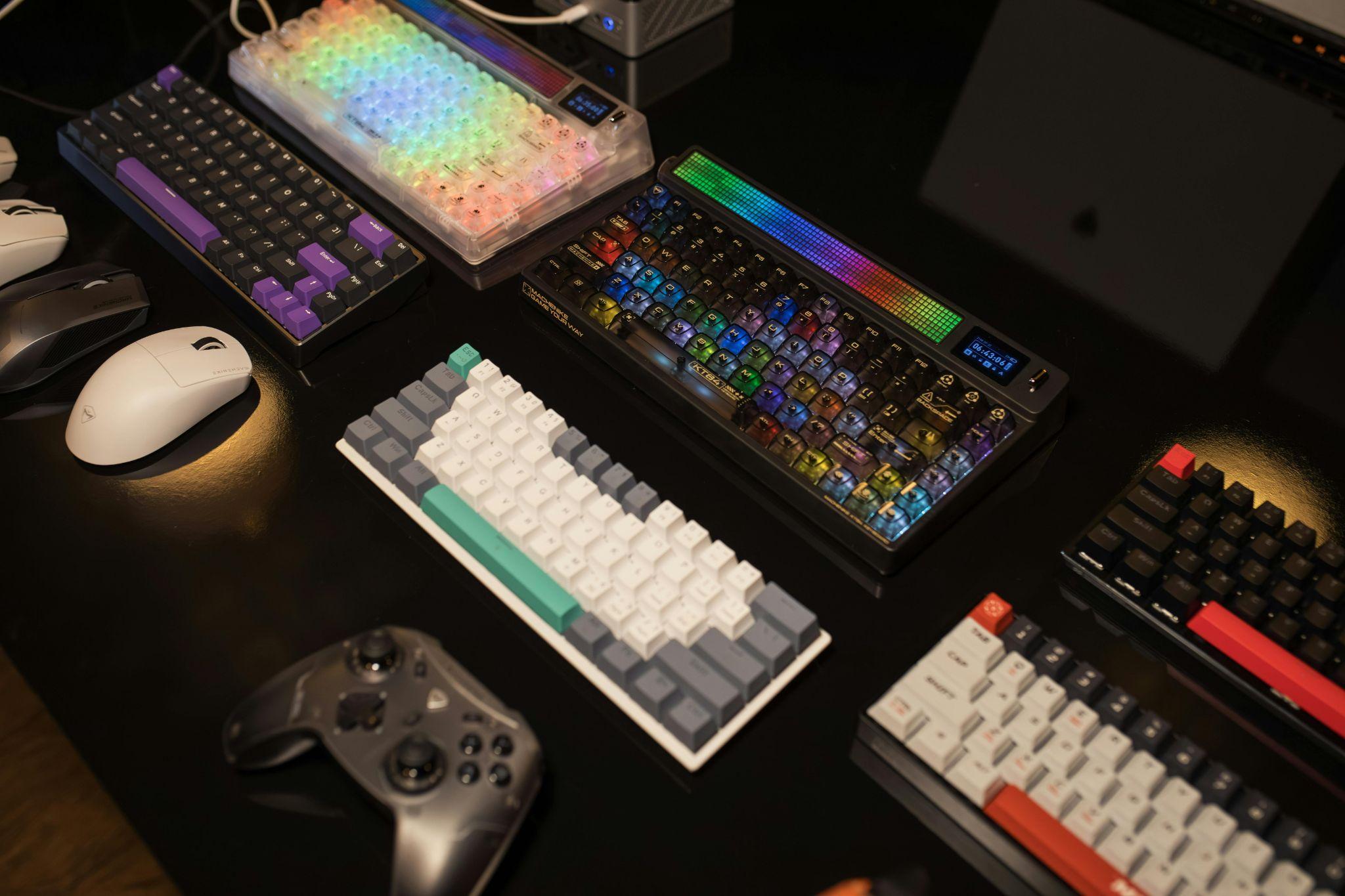How to Optimize Your PC for Gaming in 2025

Gaming performance in 2025 demands more than ever from your system, with titles pushing hardware boundaries through advanced ray tracing, 4K textures, and complex physics simulations. To optimize your PC for gaming in 2025, you’ll need a comprehensive approach that addresses common issues like frame drops, stuttering, and input lag. Modern games require seamless coordination between cutting-edge hardware, refined software configurations, and optimized network settings to deliver the smooth, responsive experience gamers expect.
Essential Hardware Upgrades to Boost Gaming Performance
Hardware remains the foundation of gaming performance, but 2025 brings new standards that make certain upgrades essential rather than optional. The latest generation of components offers significant improvements in efficiency, speed, and gaming-specific features that directly translate to better frame rates and smoother gameplay.
Upgrade Your SSD—Why Gen 4 and Gen 5 Matter Now
Solid-state drives have evolved beyond simple storage solutions to become critical gaming components that eliminate texture streaming bottlenecks and reduce asset loading times. Modern games with massive open worlds and high-resolution textures rely heavily on fast storage to maintain consistent performance without stuttering or pop-in issues.
| SSD Model | Generation | Sequential Read | Sequential Write | Best Use Case |
|---|---|---|---|---|
| WD Black SN770 | Gen 4 | 5,150 MB/s | 4,900 MB/s | Budget gaming builds |
| Samsung 980 Pro | Gen 4 | 7,000 MB/s | 5,100 MB/s | High-end gaming |
| Crucial P5 Plus | Gen 4 | 6,600 MB/s | 5,000 MB/s | Balanced performance |
| WD Black SN850X | Gen 4 | 7,300 MB/s | 6,600 MB/s | Enthusiast gaming |
| Samsung 990 Pro | Gen 5 | 12,400 MB/s | 11,700 MB/s | Future-proofing |
Gen 5 SSDs deliver unprecedented speeds that benefit games with DirectStorage implementation, allowing textures and assets to load directly into GPU memory without CPU intervention. This technology becomes increasingly important as games adopt more sophisticated streaming techniques to handle massive world sizes without compromising visual fidelity.
Choose the Right GPU & AI-Assisted Features
Modern graphics cards equipped with DLSS 4 technology represent a paradigm shift in gaming performance, offering substantial frame rate improvements while maintaining or even enhancing visual quality. These AI-powered features have become essential for maximizing performance in demanding 2025 titles.
Key benefits of DLSS 4 include:
- Multi-Frame Generation that creates up to three intermediate frames between each rendered frame
- Enhanced visual quality through AI upscaling that often surpasses native resolution
- Reduced GPU workload allowing higher settings or better frame rates
- Ray tracing performance boost making advanced lighting effects viable at higher resolutions
- Energy efficiency improvements that reduce power consumption and heat generation
The latest RTX 50 series cards leverage these technologies to deliver 4K gaming performance that was previously impossible, making high-refresh-rate gaming accessible across a broader range of titles and settings.
CPU, RAM & Cooling: Balancing Your System
Contemporary processors featuring hybrid core architectures provide excellent gaming performance when paired with sufficient high-speed RAM. The sweet spot for gaming systems in 2025 remains 16-32 GB of DDR5 RAM running at 5600 MHz or higher, ensuring smooth multitasking and adequate headroom for memory-intensive games.
Effective cooling solutions prevent thermal throttling:
- High-airflow case fans configured in positive pressure setups
- Aftermarket CPU coolers like tower air coolers or AIO liquid cooling
- Upgraded GPU cooling through custom fan curves or aftermarket solutions
- Proper cable management to improve airflow and reduce hotspots
- Thermal paste replacement on older systems to restore heat transfer efficiency
Software Tweaks & System Settings for Peak Efficiency
Software optimization works synergistically with hardware upgrades to unlock maximum gaming performance. Modern operating systems and gaming utilities offer sophisticated tools that can dramatically improve frame rates and reduce latency when properly configured.
Update Drivers & Use Optimization Tools
Maintaining current GPU drivers, chipset firmware, and system updates ensures optimal compatibility with new games and access to latest performance optimizations. Driver updates frequently include game-specific improvements that can boost performance by 10-20% in newly released titles.
Essential optimization tools for 2025:
- G-Assist AI for automatic performance tuning on RTX 30-50 series cards
- Nvidia App with enhanced game optimization and smooth motion features
- Windows Game Mode for process prioritization and resource allocation
- Hardware-accelerated GPU scheduling to reduce CPU overhead
- DirectStorage API support for compatible games and storage devices
These tools leverage machine learning and advanced scheduling algorithms to optimize system resources dynamically based on game requirements and hardware capabilities.
Fine-Tune Windows and Game Mode Settings
Windows 11 optimization requires disabling certain security features that can impact gaming performance while enabling performance-focused settings that prioritize gaming workloads over background tasks.
Step-by-step Windows optimization:
- Disable Memory Integrity in Windows Security > Device Security > Core Isolation
- Enable High Performance power plan in Control Panel > Power Options
- Activate Game Mode in Settings > Gaming > Game Mode
- Configure Hardware-accelerated GPU scheduling in Graphics Settings
- Disable fullscreen optimizations for individual game executables
- Set processor scheduling to prioritize programs over background services
- Disable Windows Update during gaming hours in Update & Security settings
Reduce Background Processes & Prioritize Gaming
Background process management involves identifying and disabling unnecessary applications, services, and system features that consume CPU cycles, memory, and network bandwidth during gaming sessions.
Key optimization steps:
- Disable startup applications through Task Manager’s Startup tab
- Stop unnecessary Windows services like Windows Search and Superfetch
- Pause antivirus real-time scanning during gaming sessions
- Disable overlays from Discord, Steam, and other applications
- Clear temporary files and browser caches regularly
- Close streaming software when not actively broadcasting
Graphics Settings and Adaptive Sync for Visual Fluidity
Visual settings optimization balances image quality with performance, leveraging modern display technologies to deliver smooth, tear-free gaming experiences. Understanding the performance impact of different graphical features allows for informed decisions about quality versus frame rate trade-offs.
Optimize In-Game Graphics Settings
Graphics settings optimization requires understanding which options provide the greatest visual impact relative to their performance cost, allowing for strategic adjustments that maintain visual fidelity while improving frame rates.
| Setting | Performance Impact | Recommended Adjustment |
|---|---|---|
| Shadows | High | Medium to High |
| Anti-Aliasing | Medium-High | TAA or DLSS |
| Texture Quality | Low-Medium | Ultra (with sufficient VRAM) |
| Effects Quality | Medium | High |
| Volumetric Lighting | High | Medium |
| Ray Tracing | Very High | Selective (reflections only) |
| Resolution Scale | Very High | 100% with DLSS |
Adaptive sync technologies like G-Sync and FreeSync eliminate screen tearing while reducing input lag, making them essential for competitive gaming and general smoothness. These technologies synchronize display refresh rates with GPU frame output, creating fluid motion even when frame rates fluctuate.
Match Your Monitor’s Refresh Rate
High-refresh-rate displays at 144Hz, 240Hz, or even 360Hz provide tangible improvements in motion clarity and input responsiveness, particularly beneficial for competitive gaming where every millisecond matters. Variable refresh rate technology ensures consistent frame delivery across varying performance conditions.
For competitive gaming, disabling V-Sync while using adaptive sync technology provides the lowest possible input lag while maintaining visual smoothness. This configuration allows the GPU to render frames as quickly as possible while the monitor handles synchronization automatically.
Networking & Latency—Win at Online Gaming
Network optimization has become increasingly critical as online gaming dominates the landscape, with even small improvements in latency and connection stability providing competitive advantages in fast-paced multiplayer games.
Prefer Wired Connections & Optimize Network Tools
Ethernet connections provide superior stability and lower latency compared to wireless alternatives, while 5GHz Wi-Fi networks offer the best wireless performance when wired connections aren’t feasible. Network congestion and interference can significantly impact gaming performance, making connection choice crucial.
Network optimization best practices:
- Use Quality of Service (QoS) settings to prioritize gaming traffic
- Choose optimal DNS servers like Cloudflare (1.1.1.1) or Google (8.8.8.8)
- Enable Game Mode on modern routers for automatic gaming optimization
- Consider gaming VPNs like NoPing for routing optimization and latency reduction
- Monitor bandwidth usage to identify and limit competing applications
Monitor Latency Metrics & Maintain Consistency
Network performance monitoring helps identify connection issues and verify optimization effectiveness. Understanding key metrics like ping, jitter, and packet loss enables targeted troubleshooting and performance improvements.
In-game network statistics displays and third-party monitoring tools provide real-time feedback on connection quality, allowing for immediate adjustments when performance degrades. Consistent monitoring helps establish baseline performance and identify patterns that may indicate network issues.
Testing Your Optimizations & Continuous Tuning
Verification and iteration form the cornerstone of effective PC optimization, ensuring that changes actually improve performance and don’t introduce new issues. Systematic testing provides quantifiable data to guide future adjustments.
Use Benchmarks and Monitoring Tools
Benchmarking software and monitoring utilities provide objective measurements of system performance, allowing for direct before-and-after comparisons of optimization efforts. These tools help identify bottlenecks and verify that changes produce intended results.
Essential testing tools:
- 3DMark for standardized graphics performance benchmarking
- MSI Afterburner for real-time monitoring and custom fan curves
- HWiNFO64 for comprehensive system monitoring and logging
- In-game benchmark modes for title-specific performance testing
- FrameView for detailed frame rate and latency analysis
- Performance overlays for live monitoring during gameplay
Iterate Based on Results
Continuous optimization involves regular reassessment of system performance as games evolve and hardware ages. Performance requirements change with new game releases, driver updates, and system modifications, making periodic reviews essential for maintaining optimal performance.
Regular testing cycles help identify gradual performance degradation from dust accumulation, thermal paste aging, or software bloat. Addressing these issues proactively prevents significant performance losses and extends system lifespan.
Conclusion
Successfully optimizing your PC for gaming in 2025 requires a holistic approach combining hardware upgrades, software refinements, graphics optimization, and network tuning. The most effective optimization strategies address system bottlenecks comprehensively rather than focusing on individual components in isolation.
To optimize your PC for gaming in 2025 effectively, establish regular maintenance routines that include driver updates, performance monitoring, and systematic testing of new optimization techniques. The gaming landscape continues evolving rapidly, making adaptability and continuous learning essential for maintaining peak performance.
Stay current with emerging technologies like DirectStorage, DLSS improvements, and next-generation hardware releases to ensure your system remains competitive throughout 2025 and beyond. Regular optimization reviews and proactive hardware maintenance will deliver consistently smooth gaming experiences across the demanding titles that define modern PC gaming.




